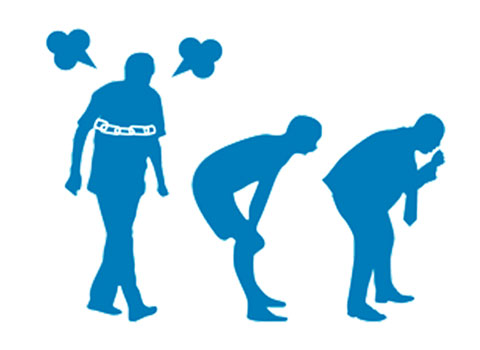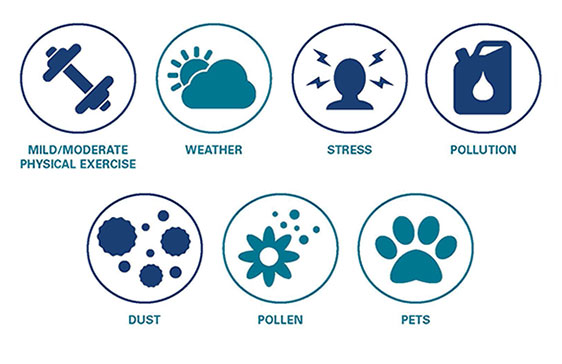About Severe Asthma

Understanding Severe Asthma
People with severe asthma have frequent asthma attack symptoms that are not well controlled despite taking daily medications. When you live with asthma, you learn to work around the condition and many people don’t realize when their asthma has become severe.
If one or more of the following statements is true of your experience with asthma, your asthma may be considered severe:
- You take daily medications but your asthma is still uncontrolled
- You’ve visited the ER or been hospitalized for respiratory related symptoms
- You are currently taking prednisone in addition to your asthma medication
- You have symptoms throughout the day and are waking up at night
- You have to limit your daily activities because of your asthma

Treatment Options
Short-term Relief- Short-term medications known as short-acting beta agonist bronchodilators or rescue inhalers relax tight muscles in the airway, are used when symptoms occur and may offer up to 4-6 hours of relief. ProAir™ HFA is a common rescue inhaler.
Bronchodilators relax airway smooth muscle to reduce the risk of asthma attacks and offer lasting relief symptoms. Long-acting beta agonists (LABA) are used for maintenance of asthma and provide relief up to 12 hours. Bronchodilators reverse or inhibit airway constriction and related symptoms of acute asthma.
Long-term Control- Long-term asthma medications such as inhaled corticosteroids and bronchodilators, are taken daily to reduce inflammation and prevent asthma symptoms. Inhaled Corticosteroids help control narrowing and inflammation by reducing airway inflammation and mucus production making it easier to breathe. Some common inhaled corticosteroids used for maintenance treatment of asthma include: Flovent™ and Pulmicort Flexhaler™.Some common long-acting beta-agonist bronchodilators include: Advair™ FHA and Dulera™, which are for people whose asthma is not well controlled on long-term asthma control medications, such as inhaled corticosteroid.
As asthma symptoms increase, the dosage level and number of maintenance asthma medication prescribed may be increased to reach an acceptable level of control. Patients with severe asthma usually have more symptoms and therefore take higher doses as well as more types of medications than do asthma patients with mild or moderate asthma.
Oral corticosteroids
Oral corticosteroids, such as prednisone, when used for maintenance, are reserved for patients with severe asthma. Long-term use of these medication can cause side effects.
Asthma biologic based therapy
For those with moderate to severe persistent allergic asthma, biologic based therapy may be effective in reducing symptoms caused by an allergen. Injections are usually given in small doses initially and then increased over time.
Omalizamab is an anti-IgE biologic known as Xolair™, is sometimes used to treat asthma triggered by airborne allergens. Other common biologics include Nucala™ and Cinqair™, which are add-on prescription maintenance treatments for patients with severe asthma, eosinophilic type. Eosinophils are a type of white blood cell that may contribute to asthma.
Bronchial Thermoplasty
Bronchial Thermoplasty (BT) is for adults with severe persistent asthma that is not well controlled with inhaled corticosteroids and long-acting beta-agonists. BT is a minimally invasive outpatient procedure that uses mild heat to reduce airway smooth muscle leading to fewer severe asthma attacks and ER visits.
